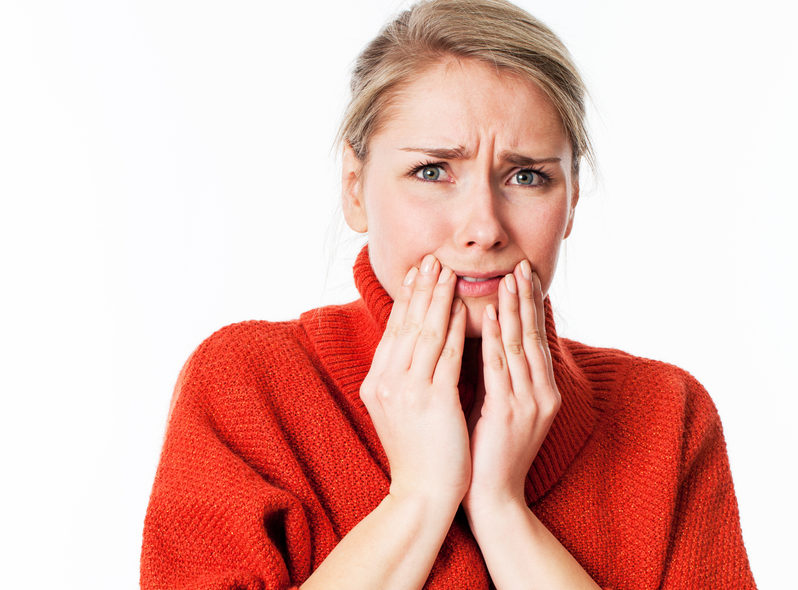4 Surprisingly Common Skin Concerns for Women Over 40

If you’re over the age of 40—and especially if you’re over 50—chances are you’re starting to see the figurative “writing on the wall” that you’re getting older. After all, our skin is the most visible indicator of aging, and along those lines, by now, you’re likely noticing some common skin concerns, such as creases around the eyes and expression lines around your mouth and on your forehead.
And if you’re a woman reading this, surely you’ve been warned by everyone from your mother to your dermatologist to the sellers of skincare creams and sunscreens that wrinkles are an unavoidable sign of aging. You’ve also likely heard the mantra that prevention is the best defense, and that’s why it’s a good idea to start caring for your skin when you’re young, such as using sunscreen regularly or applying a moisturizer before bed.
Yet if you’re like most women, you’ve likely started to notice some changes to your skin that you were NOT expecting, including uneven skin tone, increased facial hair, bumps and skin tags, and ACNE! What? Acne in my 40s? I don’t know about you, but I would have outgrown that by now?! Am I right?
So, what causes these common skin concerns, and why do they seem to magically sprout up once women are over 40? And more importantly, is there anything you can do to help prevent or reduce these surprising skin issues? Let’s find out together, shall we?

Common Skin Concerns #1: Uneven Skin Tone
What: Uneven skin tone and darker patches on the face, arms, back, and hands (often called freckles, age spots, liver spots, and sun spots)
Why: Hyperpigmentation is the mottling of skin or the increase in darker patches of skin, which result from increased melanin production, the body’s natural defense against ultraviolet (UV) light. Not surprisingly, it’s caused by years of sun exposure—especially overexposure—and the subsequent free radical-induced inflammation. That’s why it’s also most common to experience hyperpigmentation on areas of the skin that are regularly exposed to the sun. It can also be caused by other sources of UV light, such as tanning beds. And the more your skin has been exposed to UV light and the lighter your skin tone, the more likely you are to see an increase in these types of freckles and spots.
What to do: While typically not harmful, the unfortunate reality is that hyperpigmentation can make you look older than your actual age—by more than a decade.
Many of us want to reduce the appearance of these “age spots” and enjoy a more even skin tone. However, that is not always easy. So, the first step is to avoid overexposure to UV rays in the first place. Use a quality sunscreen regularly—even on cloudy days—and if you’re facing extended exposure, use a protective hat and clothing as well, especially during peak hours of sunlight.
There’s a number of skincare products (e.g., hydroquinone, Retin-A, glycolic acid) that claim to reduce the darker patches on your skin. However, the safety and effectiveness of these are questionable. One ingredient that is both safe and promising is glutathione, which is the body’s master antioxidant. A recent showed that Setria® glutathione exerts a skin lightening and whitening effect by reducing melanin production.
A handful of at-home suggestions that are thought to be effective include:
- Using aloe gel twice a day (either from the plant or a store-bought product that’s pure aloe)
- Dabbing the spots with lemon juice daily and leaving it on the skin for 10 to 15 minutes
- Applying a 5% hydrogen peroxide solution once daily for a few weeks followed by a moisturizer
- Dabbing buttermilk or yogurt onto the skin and leaving it for 5 to 20 minutes to allow the lactic acid to help lighten the spots as well as exfoliate the skin
- Applying a mixture of apple cider vinegar and olive oil on the skin before bed
- Making a horseradish paste, which is rich in the antioxidant vitamin C and glucosinolates (believed to increase circulation), and leaving it on the skin for 15 to 20 minutes a few times a week
- Using castor oil morning and evening
Whatever option—or options—you decide to try, be patient; it’s unlikely that you’ll see results immediately. It may take 6 to 12 months. Also, some of these methods can be harsh on the skin, and of course, individual differences apply. So, if you notice irritation, discontinue and try another strategy.

Common Skin Concerns #2: Increased Facial Hair
What: Increased facial hair, especially on the cheeks and upper lip
Why: The primary culprit is age-related changes in reproductive hormones. As women age, their bodies stop producing estrogen but not necessarily the “male” (androgen) hormones like testosterone. Ultimately, this can cause hormonal imbalances that promote hair growth on the face (as well as hair loss on the head). More than 20 million American women experience unwanted facial hair.
What to do: If the hair is light-colored “peach fuzz” and doesn’t bother you, you don’t need to do anything. If it bothers you, the most common options include:
- Plucking stray hairs
- Waxing
- Dermaplaning, which gently shaves the skin’s surface to remove dead skin along with the peach fuzz
- Threading, which removes rows of hair from the follicle with a thin thread

Common Skin Concerns #3: Increased Skin Growths
What: Skin growths, bumps, skin tags, red moles, and brown moles
Why: It’s not completely clear what leads to the growth of skin tags as we age, but it happens to both men and women. They’re more common where the skin folds (e.g., armpits, eyelids, or under the breasts), and one theory is that they occur because collagen (the main protein that makes up connective tissue) gets trapped in those folds. Cherry angiomas are small, bright-red bumps, which result from dilated blood vessels on the skin. Seborrheic keratosis moles are also more common as we age and can range in color from tan to brown to black. They’re also hereditary, so if Mom or Dad has them, you probably will too. (Thanks, Mom…)
What to do: If you have a suspicious mole, especially if it’s changed in size, color, or shape (i.e., irregular borders), please get it checked by a dermatologist to rule out skin cancer, which can lead to scarring and much worse (up to death). If you do, in fact, have a benign skin growth like those above, there are treatment options available. However, they require medical assistance to burn, scrape, cut, or laser them off. Since most moles and skin tags are harmless, you don’t need to worry about removal unless they bother you. And if they do bother you, the best plan of action is to make an appointment with your dermatologist for safe removal.

Common Skin Concerns #4: Acne
What: Acne
Why: I don’t know about you, but I thought I left acne behind me with my teenage years. Unfortunately, a combination of stress, fluctuating hormones, and diet (particularly added sugar and refined carbohydrates, which promote inflammation and high levels of insulin) can contribute to adult acne. An unhealthy balance of gut microbes as well as food sensitivities can play a role as well, and pollution may also make acne worse by clogging pores. Finally, insufficient levels of vitamin D, which plays an important role in the immune system, may also contribute as the body has a harder time fighting bacteria and repairing skin.
What to do: You’re no longer a teen, so why in the world do you still get pimples? And will they ever go away? (My mom says she still gets the occasional zit, and she’s in her 70’s.) First off, you are not alone: more than 1/3 of people over 35 still seek relief from acne.
Of course, there’s no shortage of products on the market to aid with this skin concern. Choosing creams with benzoyl peroxide and salicylic acid may help unclog follicles and remove dead skin. A topical product with tea tree oil may help support healthy levels of skin inflammation.
You may find it surprising, but exercise, eating a variety of colorful fruits and vegetables (with plenty of antioxidants that support the body’s inflammatory response), and getting at least 15 minutes of daily sunshine can also help decrease acne. Staying hydrated and getting plenty of sleep are also key strategies for fending off pimples.
Get Your Healthy, Glowing Skin Back
When it comes to overall skin health, those five lifestyle strategies certainly apply across the board: Exercise, diet, time outdoors, proper hydration, and restorative sleep. Heck, while we’re at it, let’s throw stress management in there too.
As I mentioned at the beginning, when it comes to combating these common skin concerns, prevention is the best defense. So, ensure you take care of your skin with a quality sunscreen and serums or moisturizers that contain antioxidants, such as vitamins C and E and resveratrol, which may suppress the inflammation caused by roaming free radicals. Also, decrease the consumption of foods that promote inflammation; just as with the rest of your body, inflammation isn’t good for your skin, which is your body’s largest organ.
Finally, your neck and upper chest are also thinner skinned and more likely to be exposed to the damaging effects of ultraviolet light and pollution. So, don’t forget them as you care for your skin.
One of my favorite quotes is, “We were young and beautiful. Now we are just beautiful.” Age is not the enemy, but signs of aging skin can be. That’s why taking care of the health of your skin is so important. You may or may not experience all these common skin concerns for women over 40, but it is certain that your skin, as well as your body, will change through the decades. Embrace the changes and the new beauty that comes with them.
Soothe your Skin Naturally with Ageless Glow
Ageless Glow has been shown to WORK on real people like YOU by reducing the appearance of wrinkles while minimizing visible signs of aging skin, ultimately helping to restore that youthful glow.







